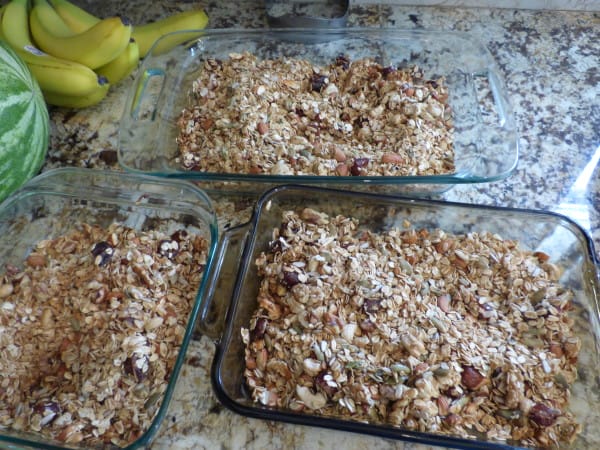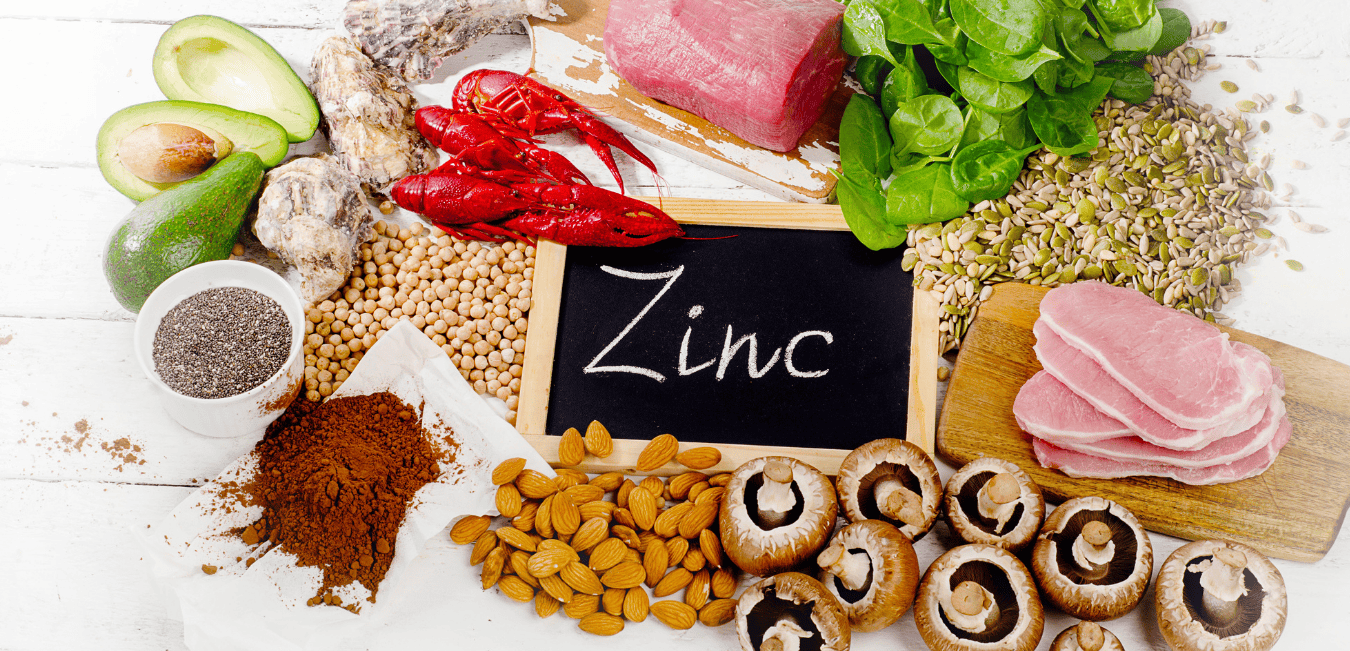As the school year kicks into gear, parents are faced with the daily task of preparing nutritious yet appealing lunches for their little ones. Balancing health, taste, convenience, and possible classroom allergies can be quite the challenge! In this article, you’ll learn what elements make up a nutritious school lunch, and I’ll share some of my favorite packable whole foods for each one.
What Elements Make Up A Balanced & Nutritious Lunch For Kids?
I like to break down a school lunch into three main elements: protein, fat, and carbs. I always make sure that the lunch contains fresh fruit, veggies, or both. Whole foods* are definitely my go-to. Many schools ask parents to pack a snack as well, and for school snacks, I like to prioritize protein. However, I try to be mindful of my kids’ preferences and familiar flavors they approve of when packing school lunches and snacks.
* Whole foods are unprocessed foods in their natural state that are free from additives, artificial flavors, and preservatives. Consuming whole foods maximizes the intake of vital nutrients while minimizing exposure to harmful chemicals often found in processed alternatives. I recommend everyone’s diet be whole food based as part of a healthy anti-inflammatory lifestyle.
Protein
Consuming sufficient protein is vital for children as it supports growth, muscle development, and tissue repair.
Protein aids in immune system function, enzyme and hormone production, and brain health, influencing cognitive abilities and mood. When filling a lunch box, I recommend packing the protein first. Packable foods that are high in carbohydrates and fats are often more readily available than protein rich foods, so packing protein first is a way to ensure that every lunch contains a good source of this essential macronutrient.
How Much Protein Does My Child Need?
The Dietary Reference Intakes for protein indicate that children 4–13 years and 14–18 years require 0.95 and 0.85 g/kg day respectively. This means that a 25 kg (56 lb) eight year old would need between 21 and 23 grams of protein per day. The graph below shows estimates by age group.
| Age | Grams of protein per day |
| Toddlers (1 to 3 years) | 13g (or 0.5g per pound of body weight) |
| Children (4 to 8 years) | 19g |
| Children (9 to 13 years) | 34g |
| Teen Boys (14 to 18 years) | 52g |
| Teen Girls (14 to 18 years) | 46g |
Source: https://health.choc.org/how-much-protein-does-my-child-need/
Packable Proteins
Some packable kid friendly foods that contain higher levels of protein include: Hard boiled eggs (I love my egg cooker!), grass fed meat/turkey sticks, cheese sticks or cubes, pistachios, and cheese crisps.
Fats
While dietary fats have often been unfairly demonized, they are a vital component of a balanced diet, especially for growing children!
Healthy fats, such as those found in avocados, nuts, seeds, full fat dairy, fatty fish, and olive oil play a crucial role in supporting overall health. These fats provide a concentrated source of energy and fat-soluble vitamins like A, D, E, and K. They also contribute to brain health and cognitive function, making them particularly important for growing minds (1). I usually recommend filling in the ‘fat’ component of the child’s lunch box second. By including healthy fats in your child’s lunch, you ensure they have the necessary nutrients for optimal development and sustained energy throughout the day.
How Much Dietary Fat Does My Child Need?
Fat should make up 30-35% of the total daily calories consumed by a child between 2-3 years old, and 25-35% of the total daily calories consumed by children and adolescents between 4-18 years old (2). Remember that fat is more calorie dense than protein and carbohydrates, so 35% of the total daily calorie intake looks different than 35% of the plate.
Certain fats, such as the saturated fats found in whole foods like eggs, coconut oil, full fat dairy, pasture raised meat, wild caught fish, and cod liver oil, play essential roles in immune function (3), insulin receptors (4), brain health (4), and more. Fat-soluble vitamins (A, D, and K2) found in grass-fed animal fats and fatty fish are crucial for mineral absorption, metabolism, and overall health (5).
In my practice, I recommend minimizing the consumption of Polyunsaturated Fatty Acids (PUFAs), particularly omega-6 PUFAs found in processed vegetable oils. Excessive omega-6 intake can lead to inflammation, possibly contributing to chronic disease (6).
Packable Fats
Some easy to pack lunch box foods that contain plenty of good fat include: hard boiled eggs (Can you tell I love putting eggs in my kids’ lunches?), whole milk cheese cubes, canned sardines, full fat pastured yogurt cups, avocado or guacamole cups, nuts & nut butters, hummus, and chia pudding.
Carbohydrates
The final good group I pack into my kid’s lunch box is carbohydrates with an emphasis on complex carbohydrates over simple carbohydrates.*
Whole unprocessed complex carbohydrates like brown rice, quinoa, sweet potatoes, and fresh fruits and veggies not only offer energy but also a wealth of vitamins, minerals, and dietary fiber that support digestion and overall well-being.
Most processed snacks marketed to kids are heavy in simple carbohydrates and not only lack the micronutrient profile offered by whole food complex carbohydrates but can also lead to crashes in energy, making them a less favorable choice for school lunches.
* Simple carbohydrates are made up of just one or two individual sugar molecules bonded together. Simple sugars are quickly broken down and absorbed by the body, leading to a rapid increase in blood sugar levels. This spike in blood sugar can result in a sudden burst of energy but is often followed by a crash in energy as blood sugar levels drop. In contrast, complex carbohydrates, made up of longer chains of sugar units, take longer to break down and provide a more gradual and sustained release of energy.
How Much Of My Child’s Diet Should Come From Carbohydrates?
For children aged 2-18 years, carbohydrates should contribute around 10-30% of total daily caloric intake (7), with very athletic children consuming up to 45-65% of their daily calories from carbohydrates (8). Focusing on complex carbohydrates, which are slower to digest, helps maintain stable energy levels and prevents rapid spikes in blood sugar.
In my practice, I emphasize the importance of choosing carbohydrates wisely and avoiding excessive consumption of highly processed options. Refined carbohydrates, such as sugary snacks and white bread are best saved for special occasions or not offered at all.
Packable Carbohydrates
Great lunch box options to provide carbohydrate sources include whole grain sandwiches, fruit salads, vegetable sticks with hummus, and whole grain or chickpea pasta salads loaded with colorful veggies.
Putting It All Together
My kids love a charcuterie type lunch box, which makes it easy for me to tick off the boxes of Protein, Fat, and Carbs. However, that doesn’t mean you can’t put all three food groups together. For example, banana slices and nut butter rolled up in a Cinnamon Egg White Wrap. You’re getting fat & protein from the nut butter, additional protein from the egg white wrap, and carbohydrates from the banana. It could also look like a turkey breast (protein) and whole milk cheese (fat & protein) sandwich on whole grain bread (carbs).
Familiar Favorites with a Nutritious Twist
Children thrive on familiarity and incorporating their favorite foods into their lunch can make the transition to school or daycare easier. But why not give these familiar foods a nutritious upgrade? Swap out regular white bread for whole grain bread and opt for natural peanut or almond butter with no added sugars instead of traditional spreads. Choose nitrate free oven roasted organic turkey breast rather than processed smoked meats or cream top full fat plain yogurt sweetened with maple syrup rather than artificially flavored low fat yogurt. These simple changes maintain the comfort factor while increasing the nutrient content and reducing the ‘yucky stuff’ in each meal.
Hydration Matters
Don’t forget about hydration! Water should always be the primary choice, but if you’re looking to mix it up, consider herbal teas for a refreshing twist that encourages proper hydration.
Summary
Packing a school lunch is a task that many parents dread. It can feel overwhelming! That’s why I like to break the process down into three simple steps: Pack proteins first, fats second, and carbs third, while prioritizing whole foods. Protein-rich options like hard-boiled eggs and cheese sticks go into the lunch box first, followed by dietary fats, like guacamole cups and nuts or nut butters. The ‘easiest’ option comes in last, with complex carbohydrates providing sustained energy and satiation through kid favorites like fruit, sandwiches, and pasta salads.
References:
- Muth, A. K., & Park, S. Q. (2021). The impact of dietary macronutrient intake on cognitive function and the brain. Clinical nutrition (Edinburgh, Scotland), 40(6), 3999–4010. https://doi.org/10.1016/j.clnu.2021.04.043
- Dietary recommendations for Healthy Children. www.heart.org. (2023, May 10). https://www.heart.org/en/healthy-living/healthy-eating/eat-smart/nutrition-basics/dietary-recommendations-for-healthy-children
- Enig, M., Garrafa, Kratka, P., Uddin, S., Saruwatari, K., Pecco, ornella, Lori, Ferguson, J., Radu, says, M. D., Diaz, M., & Nettlefold, J. (2016, October 2). The importance of saturated fats for biological functions. The Weston A. Price Foundation. https://www.westonaprice.org/health-topics/know-your-fats/the-importance-of-saturated-fats-for-biological-functions/
- Astrup A, Magkos F, Bier D, et al. Saturated Fats and Health: A Reassessment and Proposal for Food-Based Recommendations. J Am Coll Cardiol. 2020 Aug, 76 (7) 844–857. https://doi.org/10.1016/j.jacc.2020.05.077
- National Research Council (US) Committee on Diet and Health. Diet and Health: Implications for Reducing Chronic Disease Risk. Washington (DC): National Academies Press (US); 1989. 11, Fat-Soluble Vitamins. Available from: https://www.ncbi.nlm.nih.gov/books/NBK218749/
- Patterson, E., Wall, R., Fitzgerald, G. F., Ross, R. P., & Stanton, C. (2012). Health implications of high dietary omega-6 polyunsaturated Fatty acids. Journal of nutrition and metabolism, 2012, 539426. https://doi.org/10.1155/2012/539426
- Dietary recommendations for Healthy Children. www.heart.org. (2023, May 10). https://www.heart.org/en/healthy-living/healthy-eating/eat-smart/nutrition-basics/dietary-recommendations-for-healthy-children
- Purcell, L. K., & Canadian Paediatric Society, Paediatric Sports and Exercise Medicine Section (2013). Sport nutrition for young athletes. Paediatrics & child health, 18(4), 200–205. https://doi.org/10.1093/pch/18.4.200


